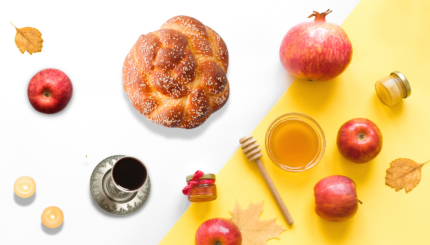The shofar can be made of the horn of a ram, antelope, gazelle, goat, or Rocky Mountain goat. These horns are not solid bone, but contain cartilage, which can be removed. The word shofar means “hollow.” The above animals are kosher, since they have spilt hooves and chew their cud. Rams’ horns can be obtained from slaughterhouses. Butcher storeowners may be able to get them from their suppliers.
When is Rosh Hashanah 2019? Find out here. Or wondering when is Yom Kippur 2019? Click here to find out!
Step 1
Boil the shofar in water for at least two hours and probably as long as five. A bit of washing soda added to the water facilitates later cleaning. The cartilage can be pulled out with the aid of a pick. If the horns are small, the cartilage can be removed in about half an hour.
Step 2
With a soft wire, measure how far the hollow of the shofar extends. Measure one inch farther on the outside and cut the tip off with a coping saw or hacksaw. The horn should completely dry before cutting.
With your help, My Jewish Learning can provide endless opportunities for learning, connection and discovery.
Step 3
Drill a 1/8”hole with an electric drill from the sawed-off end until the bit reaches the hollow of the horn.
Step 4
Using various bits from an electric modeling set (we use the Dremel M #2 Moto- Tool Set, which looks like a lightweight electric hand drill comes with about 24 attachments), carve a bell-shaped mouthpiece at the end of the shofar, similar to the one on a trumpet. Smooth the edges of the mouthpiece with the electric model tool. The mouthpiece may require modification in size and shape for each shofar and person. An experienced shofar-blower or trumpet player can test out the shofars.
The electric modeling tool can also be used to carve designs on the outer edge of the shofar as well as on the body of the shofar. There must be no holes in the sides of the shofar and no paint or anything added to the shofar.
Thus far we have not been successful in reshaping the curves of the shofar. We used them as they came naturally.
With the electric tool, the outside and inside surfaces of the shofar can be smoothed. We do not smooth over shofars; they are rough and uneven. However, when blown properly, the shofars sound beautiful.
Reprinted with permission from The Jewish Catalog: A Do-It-Yourself Kit, edited by Richard Siegel, Michael Strassfeld and Susan Strassfeld, published by the Jewish Publication Society.
Rosh Hashanah
Pronounced: roshe hah-SHAH-nah, also roshe ha-shah-NAH, Origin: Hebrew, the Jewish new year.
shofar
Pronounced: sho-FAR or SHO-far, Origin: Hebrew, a ram’s horn that is sounded during the month of Elul, on Rosh Hashanah, and on Yom Kippur. It is mentioned numerous times in the Bible, in reference to its ceremonial use in the Temple and to its function as a signal-horn of war.
Yom Kippur
Pronounced: yohm KIPP-er, also yohm kee-PORE, Origin: Hebrew, The Day of Atonement, the holiest day on the Jewish calendar and, with Rosh Hashanah, one of the High Holidays.



